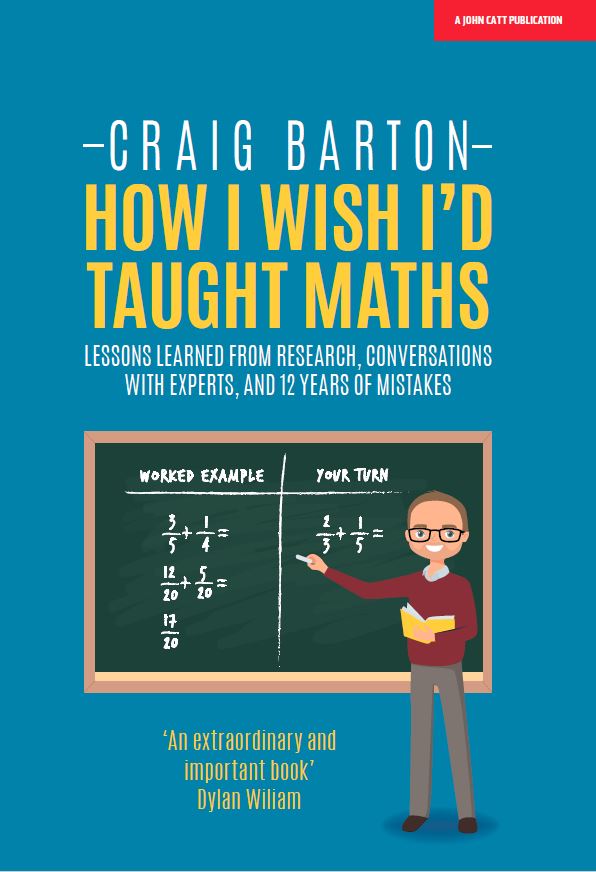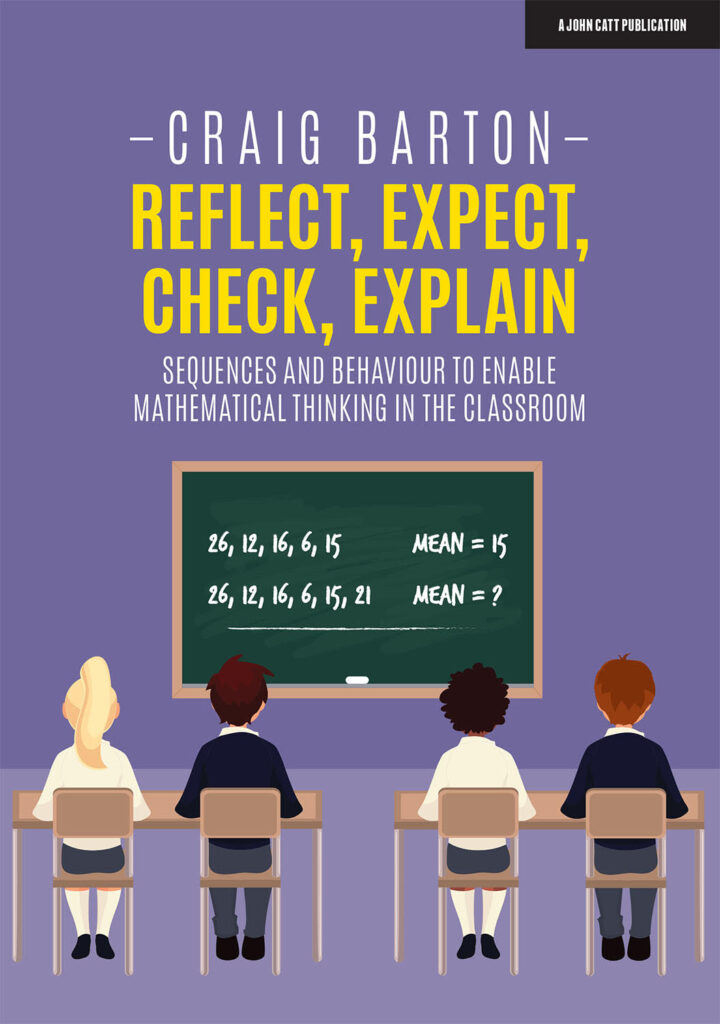GCSE Nov 2018 Edexcel Foundation Paper 1 Interactive Practice
Mark Scheme Legend
- M1 = Method mark (correct method used)
- A1 = Accuracy mark (correct answer)
- B1 = Independent mark (correct answer with no method needed)
- C1 = Communication mark (fully correct statement/explanation)
- P1 = Process mark (correct process in problem solving)
Table of Contents
- Question 1 (Ordering Decimals)
- Question 2 (Fractions & Percentages)
- Question 3 (Factors)
- Question 4 (Rounding)
- Question 5 (Order of Operations)
- Question 6 (Fraction Arithmetic)
- Question 7 (Pictograms)
- Question 8 (Coordinates & Lines)
- Question 9 (Algebraic Substitution)
- Question 10 (Prime Numbers)
- Question 11 (Fraction Equivalence)
- Question 12 (Graphs of Costs)
- Question 13 (Ratio)
- Question 14 (Geometric Proof)
- Question 15 (Ratio & Proportion)
- Question 16 (Similarity)
- Question 17 (Frequency Trees)
- Question 18 (Best Buy)
- Question 19 (Transformations)
- Question 20 (Indices)
- Question 21 (Rearranging Formulae)
- Question 22 (Percentages & Ratio)
- Question 23 (Inverse Proportion)
- Question 24 (Speed, Distance, Time)
- Question 25 (Simultaneous Equations)
- Question 26 (Area of Circles)
- Question 27 (Probability Trees)
- Question 28 (Polygons)
Question 1 (1 mark)
Write the following numbers in order of size.
Start with the smallest number.
0.4 0.02 0.37 0.152 0.2
📝 Worked Solution
Step 1: Compare Place Value
💡 Strategy: Write all numbers with the same number of decimal places (3) by adding zeros. This makes them easier to compare.
0.400
0.020
0.370
0.152
0.200
Step 2: Order Them
🔍 Method: Compare the numbers as if they were whole numbers (ignoring the decimal point).
20 (0.02)
152 (0.152)
200 (0.2)
370 (0.37)
400 (0.4)
🏆 Final Answer:
0.02, 0.152, 0.2, 0.37, 0.4
✓ (B1)
Question 2 (1 mark)
Write 0.6 as a percentage.
📝 Worked Solution
Step 1: Understanding Conversion
💡 Why we do this: To convert a decimal to a percentage, we multiply by 100.
🏆 Final Answer:
60%
✓ (B1)
Question 3 (1 mark)
Here is a list of numbers.
3 5 7 12 15 18 20
From the list, write down a factor of 10.
📝 Worked Solution
Step 1: Identify Factors of 10
💡 What is a factor? A number that divides into 10 exactly (without a remainder).
Factors of 10 are: 1, 2, 5, 10.
Step 2: Check the List
🔍 Method: Look for any of these numbers in the provided list.
List: 3, 5, 7, 12, 15, 18, 20
We see 5 is in the list.
🏆 Final Answer:
5
✓ (B1)
Question 4 (1 mark)
Write 7829 to the nearest 1000.
📝 Worked Solution
Step 1: Identify the Hundreds Digit
💡 Rule: To round to the nearest 1000, we check the digit in the hundreds column.
7829
The hundreds digit is 8.
Step 2: Decide to Round Up or Down
🔍 Method: Since 8 is 5 or greater, we round up the thousands digit.
7000 becomes 8000.
🏆 Final Answer:
8000
✓ (B1)
Question 5 (3 marks)
(a) Work out \( 3 \times 5 + 7 \)
(b) Work out \( 2^3 \)
(c) Write brackets ( ) in this statement to make it correct.
7 × 2 + 3 = 35
📝 Worked Solution
Part (a): Order of Operations
💡 BIDMAS Rule: Multiplication comes before Addition.
First, multiply: \( 3 \times 5 = 15 \)
Then, add: \( 15 + 7 = 22 \)
✓ (B1) Answer: 22
Part (b): Powers
💡 Meaning: \( 2^3 \) means 2 multiplied by itself 3 times.
✓ (B1) Answer: 8
Part (c): Brackets
🔍 Method: We need the result to be 35. Let’s test placing brackets.
Option 1: \( (7 \times 2) + 3 = 14 + 3 = 17 \) (Incorrect)
Option 2: \( 7 \times (2 + 3) = 7 \times 5 = 35 \) (Correct!)
🏆 Final Answer:
\( 7 \times (2 + 3) = 35 \)
✓ (B1)
Question 6 (3 marks)
Sue has 2 cats.
Each cat eats \( \frac{1}{4} \) of a tin of cat food each day.
Sue buys 8 tins of cat food.
Has Sue bought enough cat food to feed her 2 cats for 14 days?
You must show how you get your answer.
📝 Worked Solution
Step 1: Calculate daily consumption
💡 Goal: Find out how many tins are eaten per day in total.
2 cats each eat \( \frac{1}{4} \) tin.
\[ 2 \times \frac{1}{4} = \frac{2}{4} = \frac{1}{2} \text{ tin per day} \]✓ (P1)
Step 2: Calculate tins needed for 14 days
💡 Goal: Multiply daily usage by 14 days.
✓ (P1)
Step 3: Compare with tins bought
🔍 Comparison: Sue bought 8 tins. She needs 7 tins.
She has 8 tins.
She needs 7 tins.
8 > 7, so she has enough.
🏆 Final Answer:
Yes (supported by working)
✓ (C1)
Question 7 (3 marks)
There are only apple trees, cherry trees, pear trees and plum trees in an orchard.
The pictogram shows information about the numbers of apple trees, cherry trees and pear trees in the orchard.
There is a total of 30 trees in the orchard.
Complete the pictogram.
📝 Worked Solution
Step 1: Interpret the Key
💡 Key: One full square \(\square = 4\) trees.
Step 2: Count existing trees
🔍 Analysis:
- Apple: 3 full squares. \( 3 \times 4 = 12 \).
- Cherry: 1 full square (4) + 1 quarter square (1). \( 4 + 1 = 5 \).
- Pear: 1 full square (4) + 1 half square (2). \( 4 + 2 = 6 \).
✓ (M1) (Interpreting 12, 5, 6)
Step 3: Calculate Plum trees
💡 Goal: Find the difference between the Total (30) and trees already counted (23).
✓ (M1)
Step 4: Draw Plum trees
🎨 Drawing: We need to represent 7 trees.
7 trees = 4 trees (1 box) + 3 trees (3/4 box).
Draw: One full square and one three-quarter square.
✓ (C1)
Question 8 (3 marks)
(a) Write down the coordinates of point A.
(b) On the grid, mark with a cross (×) the point (2, 3). Label this point B.
(c) On the grid, draw the line with equation \( x = -4 \)
📝 Worked Solution
Part (a): Coordinates of A
💡 Method: Read the x-value (horizontal) first, then the y-value (vertical).
From Origin, go left to -2, then down to -1.
🏆 Answer: (-2, -1)
✓ (B1)
Part (b): Plot Point B (2, 3)
💡 Method: x = 2 (Right 2), y = 3 (Up 3).
✓ (B1)
Part (c): Line x = -4
💡 Concept: The line \( x = -4 \) is a vertical line passing through -4 on the x-axis.
✓ (B1)
Question 9 (2 marks)
\( g = 9 \)
\( h = 4 \)
Work out the value of \( 2g + 3h \)
📝 Worked Solution
Step 1: Substitution
💡 Method: Replace \( g \) with 9 and \( h \) with 4 in the expression.
Step 2: Calculate
💡 Operations: Multiply first, then add.
✓ (M1) (For substitution)
🏆 Final Answer:
30
✓ (A1)
Question 10 (2 marks)
Write down two prime numbers that have a sum of 32.
📝 Worked Solution
Step 1: List Prime Numbers
💡 Recall: Prime numbers have exactly two factors (1 and themselves).
2, 3, 5, 7, 11, 13, 17, 19, 23, 29, 31…
Step 2: Find pairs that sum to 32
🔍 Trial: Test numbers from the list.
\( 3 + 29 = 32 \) (Both prime) ✅
\( 13 + 19 = 32 \) (Both prime) ✅
✓ (M1) (Identifying appropriate primes)
🏆 Final Answer:
3 and 29 (or 13 and 19)
✓ (A1)
Question 11 (3 marks)
Here are some fractions.
\[ \frac{9}{12} \quad \frac{6}{8} \quad \frac{18}{24} \quad \frac{10}{16} \quad \frac{15}{20} \]
One of these fractions is not equivalent to \( \frac{3}{4} \).
(a) Which fraction?
(b) Work out \( \frac{1}{12} + \frac{5}{6} \)
📝 Worked Solution
Part (a): Equivalent Fractions
🔍 Check: Simplify each fraction.
\( \frac{9}{12} = \frac{3}{4} \) (Divide by 3) ✓
\( \frac{6}{8} = \frac{3}{4} \) (Divide by 2) ✓
\( \frac{18}{24} = \frac{3}{4} \) (Divide by 6) ✓
\( \frac{10}{16} = \frac{5}{8} \) (Divide by 2) ❌ (Not 3/4)
\( \frac{15}{20} = \frac{3}{4} \) (Divide by 5) ✓
✓ (B1) Answer: \( \frac{10}{16} \)
Part (b): Adding Fractions
💡 Rule: You need a common denominator.
Multiples of 12: 12, 24…
Multiples of 6: 6, 12…
Lowest Common Multiple is 12.
Convert \( \frac{5}{6} \) to twelfths:
\[ \frac{5 \times 2}{6 \times 2} = \frac{10}{12} \]Now add:
\[ \frac{1}{12} + \frac{10}{12} = \frac{11}{12} \]✓ (M1) for denominator, ✓ (A1) Answer: \( \frac{11}{12} \)
Question 12 (3 marks)
Tom uses his lorry to deliver bricks.
You can use this graph to find the delivery cost for different distances.
For each delivery, there is a fixed charge plus a charge for the distance.
(a) How much is the fixed charge?
Tom makes two deliveries of bricks.
The distance of one delivery is 20 miles more than the distance of the other delivery.
(b) Work out the difference between the two delivery costs.
📝 Worked Solution
Part (a): Fixed Charge
💡 Concept: The fixed charge is the cost when the distance is 0 (the y-intercept).
Looking at the graph, when Distance = 0, Cost = 20.
✓ (B1) Answer: £10 (Wait, graph scale: 0 to 20 is 2 grid blocks. 20 is marked. It starts at 20.)
Correction: The line starts exactly at 20 on the y-axis.
Answer: £20
✓ (B1)
Part (b): Difference in Cost
💡 Concept: This asks for the gradient (cost per mile) multiplied by 20 miles, or simply the change in cost for a 20-mile interval.
Let’s pick two points 20 miles apart, e.g., 0 miles and 20 miles.
Cost at 0 miles = £20
Cost at 20 miles (read from graph) = £40
Difference = \( 40 – 20 = 20 \)
Alternatively, Cost at 40 miles = £60. Difference \( 60 – 40 = 20 \).
✓ (M1) Reading graph, ✓ (A1) Answer: £20
Question 13 (2 marks)
Azmol, Ryan and Kim each played a game.
- Azmol’s score was four times Ryan’s score.
- Kim’s score was half of Azmol’s score.
Write down the ratio of Azmol’s score to Ryan’s score to Kim’s score.
📝 Worked Solution
Step 1: Define Variables
💡 Strategy: Let Ryan’s score be 1 (since it seems to be the base unit).
Ryan = \( 1 \)
Azmol = \( 4 \times \text{Ryan} = 4 \)
Kim = \( \frac{1}{2} \times \text{Azmol} = \frac{1}{2} \times 4 = 2 \)
✓ (M1)
Step 2: Write Ratio
💡 Order: Azmol : Ryan : Kim
Ratio = 4 : 1 : 2
✓ (A1)
Question 14 (4 marks)
The diagram shows quadrilateral ABCD with each of its sides extended.
\( AB = AD \)
Show that \( ABCD \) is a kite.
Give a reason for each stage of your working.
📝 Worked Solution
Step 1: Find Interior Angle D
💡 Reasoning: Angles on a straight line add to \( 180^\circ \).
✓ (M1)
Step 2: Find Interior Angle C
💡 Reasoning: Vertically opposite angles are equal.
✓ (M1)
Step 3: Find Interior Angle B
💡 Reasoning: Angles in a quadrilateral add to \( 360^\circ \).
✓ (M1)
Step 4: Prove it is a Kite
💡 Definition: A kite has two pairs of equal adjacent sides and one pair of equal opposite angles.
- We found \( \text{Angle } ADC = 105^\circ \) and \( \text{Angle } ABC = 105^\circ \). (One pair of equal opposite angles).
- We are given \( AB = AD \).
- Since the angles opposite the diagonal AC are equal (105°) and one pair of adjacent sides are equal (AB=AD), the other pair must be equal (CB=CD).
Conclusion: Since \( AB=AD \) and \( CB=CD \), ABCD is a kite.
✓ (C1) (Complete proof with reasons)
Question 15 (4 marks)
Shahid is going to use these instructions to make a fizzy drink.
with 2 parts of lemonade
Shahid thinks that he has 300 ml of orange juice and 200 ml of lemonade.
(a) If Shahid is correct, what is the greatest amount of fizzy drink he can make?
(b) Shahid has 300 ml of orange juice but he only has 160 ml of lemonade.
Does this affect the greatest amount of fizzy drink he can make?
Give a reason for your answer.
📝 Worked Solution
Part (a): Greatest Amount
💡 Ratio: Orange : Lemonade = 5 : 2
Let’s check which ingredient runs out first.
Check Orange Juice (300ml):
1 part = \( 300 \div 5 = 60 \) ml
Lemonade needed = \( 60 \times 2 = 120 \) ml
We have 200ml Lemonade, so we have enough.
Total Drink:
Orange used: 300 ml
Lemonade used: 120 ml
\[ 300 + 120 = 420 \text{ ml} \]Arithmetic check:
\[ \require{enclose} \begin{array}{r} 60 \\[-3pt] 5 \enclose{longdiv}{300} \\[-3pt] \underline{-30}\phantom{0} \\[-3pt] 00 \\[-3pt] \end{array} \]✓ (P1, P1, A1) Answer: 420 ml
Part (b): Change in Lemonade
🔍 Check: He now has 160 ml of lemonade. Does he still have enough?
From part (a), he only needs 120 ml of lemonade to match the 300 ml of orange juice.
160 ml > 120 ml.
Answer: No, it does not affect the amount. He still has enough lemonade (more than 120 ml).
✓ (C1)
Question 16 (1 mark)
Here are two rectangles.
Jim says,
“The two rectangles are similar because \( 8 + 4 = 12 \) and \( 6 + 4 = 10 \)”
Is Jim correct?
Explain your answer.
📝 Worked Solution
Step 1: Understanding Similarity
💡 Definition: Similar shapes have the same ratio of corresponding sides (scale factor). Addition does not make shapes similar; multiplication does.
Check ratio of widths: \( \frac{12}{8} = 1.5 \)
Check ratio of heights: \( \frac{10}{6} = 1.66… \)
The ratios are not equal.
🏆 Final Answer:
No. For shapes to be similar, the sides must be multiplied by the same scale factor, not added to.
✓ (C1)
Question 17 (5 marks)
80 people are asked if they like coffee.
- 48 of these people are women.
- 61 of the 80 people like coffee.
- 8 of the men do not like coffee.
(a) Use this information to complete the frequency tree.
One of the people who like coffee is chosen at random.
(b) Find the probability that this person is a woman.
📝 Worked Solution
Part (a): Completing the Tree
💡 Logic: Use subtraction to find missing values.
1. Women: Given as 48.
2. Men: Total – Women = \( 80 – 48 = 32 \).
3. Men who do not like coffee: Given as 8.
4. Men who like coffee: Total Men – Not Like = \( 32 – 8 = 24 \).
5. Women who like coffee: Total Like – Men Like = \( 61 – 24 = 37 \).
6. Women who do not like: Total Women – Women Like = \( 48 – 37 = 11 \).
✓ (C1, C1, C1)
Part (b): Probability
💡 Condition: We are choosing from “people who like coffee” (Total = 61).
Number of people who like coffee = 61.
Number of women who like coffee = 37.
\[ P(\text{Woman}) = \frac{37}{61} \]✓ (M1, A1)
Question 18 (4 marks)
Food Mart and Jan’s Store sell boxes of the same type of breakfast cereal.
Each shop has a special offer.
Which box of cereal is the better value for money?
You must show your working.
📝 Worked Solution
Step 1: Calculate Value for Food Mart
💡 Deal: 20% off £5. Weight stays 400g.
20% of £5 = \( \frac{20}{100} \times 5 = £1 \).
Price = \( 5 – 1 = £4 \).
Value: 400g for £4.
Cost per 100g = \( 400 \div 4 = 100\)g per £1.
✓ (P1)
Step 2: Calculate Value for Jan’s Store
💡 Deal: 30% extra weight. Price stays £5.
30% of 400g = \( \frac{30}{100} \times 400 = 120 \) g.
Weight = \( 400 + 120 = 520 \) g.
Value: 520g for £5.
Cost per 100g = \( 520 \div 5 = 104\)g per £1.
✓ (P1)
Step 3: Compare
🔍 Comparison: Compare grams per £1.
Food Mart: 100g per £1.
Jan’s Store: 104g per £1.
104g > 100g, so you get more for your money at Jan’s.
🏆 Final Answer:
Jan’s Store
✓ (C1)
Question 19 (2 marks)
Rotate shape A 180° about (1, 0)
📝 Worked Solution
Step 1: Coordinate Mapping
💡 Method: Find the change in x and y from the center (1,0) to each point, then reverse it.
Point (-1, 3) is: Left 2, Up 3 from center.
Rotated point: Right 2, Down 3 from center.
\( (1+2, 0-3) = (3, -3) \)
Step 2: Draw New Shape
The new shape is in the bottom right quadrant.
✓ (B2)
Question 20 (2 marks)
Work out the value of \( \frac{3^7 \times 3^{-2}}{3^3} \)
📝 Worked Solution
Step 1: Simplify Numerator
💡 Law of Indices: \( a^m \times a^n = a^{m+n} \)
Step 2: Divide
💡 Law of Indices: \( \frac{a^m}{a^n} = a^{m-n} \)
✓ (M1, A1)
Question 21 (4 marks)
\( v^2 = u^2 + 2as \)
\( u = 12 \quad a = -3 \quad s = 18 \)
(a) Work out a value of \( v \).
(b) Make \( s \) the subject of \( v^2 = u^2 + 2as \)
📝 Worked Solution
Part (a): Substitution
💡 Method: Substitute the values into the formula.
✓ (M1, A1) Answer: 6 (or -6)
Part (b): Rearranging
💡 Goal: Isolate \( s \) on one side.
Subtract \( u^2 \) from both sides:
\[ v^2 – u^2 = 2as \]Divide by \( 2a \):
\[ s = \frac{v^2 – u^2}{2a} \]✓ (M1, A1)
Question 22 (5 marks)
A bonus of £2100 is shared by 10 people who work for a company.
- 40% of the bonus is shared equally between 3 managers.
- The rest of the bonus is shared equally between 7 salesmen.
One of the salesmen says,
“If the bonus is shared equally between all 10 people I will get 25% more money.”
Is the salesman correct?
You must show how you get your answer.
📝 Worked Solution
Step 1: Calculate Current Salesman Bonus
💡 Managers’ Share: 40% of 2100.
Salesmen’s Share (The Rest):
\[ 2100 – 840 = 1260 \]Per Salesman:
\[ 1260 \div 7 = 180 \]So, currently, a salesman gets £180.
✓ (P1, P1, P1)
Step 2: Calculate Equal Share Bonus
💡 Scenario: Shared between 10 people.
With equal sharing, a salesman would get £210.
Step 3: Check Percentage Increase
💡 Comparison: Increase from 180 to 210.
Increase amount = \( 210 – 180 = 30 \)
Percentage increase = \( \frac{30}{180} \times 100 \)
\[ \frac{30}{180} = \frac{3}{18} = \frac{1}{6} \]\( \frac{1}{6} \) is approx 16.6%.
The salesman claimed 25%.
Conclusion: No, the salesman is incorrect.
✓ (P1, A1)
Question 23 (3 marks)
It would take 120 minutes to fill a swimming pool using water from 5 taps.
(a) How many minutes will it take to fill the pool if only 3 of the taps are used?
(b) State one assumption you made in working out your answer to part (a).
📝 Worked Solution
Part (a): Inverse Proportion
💡 Logic: Fewer taps means MORE time. It is inverse proportion.
Find the total “tap-minutes” required.
Now divide by 3 taps:
\[ 600 \div 3 = 200 \text{ minutes} \]✓ (M1, A1)
Part (b): Assumption
Assumption: The taps all flow at the same rate.
✓ (C1)
Question 24 (4 marks)
A plane travels at a speed of 213 miles per hour.
(a) Work out an estimate for the number of seconds the plane takes to travel 1 mile.
(b) Is your answer to part (a) an underestimate or an overestimate?
Give a reason for your answer.
📝 Worked Solution
Part (a): Estimate
💡 Strategy: Round numbers to make calculation easy.
Round 213 mph to 200 mph.
Speed = 200 miles in 1 hour.
1 hour = 3600 seconds.
Time for 1 mile = \( \frac{3600}{200} \)
\[ 3600 \div 200 = 36 \div 2 = 18 \text{ seconds} \]✓ (M1, M1, A1)
Part (b): Error Check
🔍 Reasoning: We rounded the speed DOWN (213 -> 200).
Since we divided by a smaller number (200 instead of 213), the result is larger than the real value.
Answer: Overestimate.
✓ (C1)
Question 25 (3 marks)
Solve the simultaneous equations
\[ 5x + y = 21 \]
\[ x – 3y = 9 \]
📝 Worked Solution
Step 1: Eliminate a variable
💡 Strategy: Multiply the top equation by 3 so the ‘y’ terms match.
(1) \( 5x + y = 21 \) \( \times 3 \rightarrow 15x + 3y = 63 \)
(2) \( x – 3y = 9 \)
Add the equations:
\[ 16x = 72 \] \[ x = \frac{72}{16} = \frac{9}{2} = 4.5 \]✓ (M1)
Step 2: Find y
💡 Method: Substitute \( x = 4.5 \) into original equation (1).
✓ (M1)
🏆 Final Answer:
\( x = 4.5, y = -1.5 \)
✓ (A1)
Question 26 (4 marks)
The diagram shows a square ABCD with sides of length 20 cm.
It also shows a semicircle and an arc of a circle.
AB is the diameter of the semicircle.
AC is an arc of a circle with centre B.
Show that \( \frac{\text{area of shaded region}}{\text{area of square}} = \frac{\pi}{8} \)
📝 Worked Solution
Step 1: Area of Square
Step 2: Area of Semicircle
💡 Dimensions: Diameter = 20, so Radius = 10.
✓ (C1)
Step 3: Area of Sector (Quarter Circle)
💡 Dimensions: Centre B. Radius is side BA = 20.
✓ (C1)
Step 4: Shaded Area and Ratio
Shaded Area = Sector – Semicircle
\[ 100\pi – 50\pi = 50\pi \]Ratio:
\[ \frac{50\pi}{400} = \frac{5\pi}{40} = \frac{\pi}{8} \]Q.E.D.
✓ (C1)
Question 27 (4 marks)
Amina has two bags.
- In the first bag there are 3 red balls and 7 green balls.
- In the second bag there are 5 red balls and 4 green balls.
Amina takes at random a ball from the first bag.
She then takes at random a ball from the second bag.
(a) Complete the probability tree diagram.
(b) Work out the probability that Amina takes two red balls.
📝 Worked Solution
Part (a): Tree Diagram
💡 Logic: Probabilities on branches must sum to 1.
First Bag: P(Green) = \( 1 – \frac{3}{10} = \frac{7}{10} \)
Second Bag (Totals 9 balls): P(Green) = \( \frac{4}{9} \), P(Red) = \( \frac{5}{9} \)
✓ (B2) All correct
Part (b): Two Red Balls
💡 Method: Multiply probabilities along the “Red” then “Red” branches.
Simplifying (optional): \( \frac{1}{6} \)
✓ (M1, A1)
Question 28 (3 marks)
The size of each interior angle of a regular polygon is 11 times the size of each exterior angle.
Work out how many sides the polygon has.
📝 Worked Solution
Step 1: Set up Equation
💡 Fact: Interior Angle + Exterior Angle = 180°.
Let Exterior Angle = \( x \).
Interior Angle = \( 11x \).
✓ (P1)
Step 2: Solve for Exterior Angle
✓ (P1)
Step 3: Find Number of Sides
💡 Formula: Number of sides \( n = \frac{360}{\text{Exterior Angle}} \).
✓ (A1)








